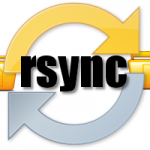Image plays a very important role in an article. And with good image optimization, your website will be more appreciated on Google Image Search, which will help speed up the loading of the page and SEO web. So how to optimize the image?
Here are the 5 best SEO tips to optimize images in WordPress that you can reference:
1. Select right images for your article
Your image needs to be relevant to the content of the article. If you use a balloon image to present for an animal, it is not appropriate at all.
When the images related to the article are you well optimized then your website can gain huge traffic from the Google image search. It’s good for overall SEO and has made readers easier to understand about your articles.
Of particular note, the image is used without copyright, should also be yours, do not use images of other individuals or websites.
So how images are optimized?
Image storage: If you use images for posts that are too large will affect the load of your page, but when the page load speed is too long, no one would linger to see your track. And this does not affect SEO at all.
So you need to reduce the size of the image and to do so, you can use image compression tools. In wordpess there are pugins used to compress the image size such as: BJ Lazi load, WP Smush It, … However, you should also note, although the image is reduced in size but still have to ensure image quality to benefit for SEO.
Image size: You need to align to fit the layout in your post. In WordPress there are usually three types of customizations to choose from: Full Size, Medium Size, and Small Size. You should use the size to fit the article layout, easy to see and this is also a good point for SEO.
2. Annotate the image in the article
Whether your image is captivating or not is not really a big impact on SEO. However, if you use footnotes for images, it will help readers understand your intentions and increase the attractiveness of the image. At the same time it is also a keyword for your post.
3. Describe the image in the article
You need a keyword to describe the image accurately, avoid duplication. The name of the image must describe the relevant content of the image and related to the title or keywords you want SEO. The best way to name is use dashes to separate words from each other. For example: web-hosting/wordpress-hosting/.
4. Add the alt attribute to the image in the article
Alt text appears when you hover over the image. It includes a keyword of your article or website and it may also be the title for the article. What you need to do is to accurately depict the content of the image in a sentence or a piece of text is very concise and concise to ensure the exact content of the image description. This factor is very important in WordPress articles so good for SEO.
5. Format the image file in the article
There are usually three common formats:
.jpg – photo
.gif – animation
.png – graphic image.
Image file format enhancements help to improve image quality and improve your page load speed. Depending on the case and the purpose you choose to format the image file differently to suit!
In addition, the choice of hosting hosting also affects the optimization of the image. Dedicated hosting dedicated to WordPress source code will increase the speed of image processing by supporting Litespeed Cache. Therefore, you should choose the hosting so that wordpress works best.











